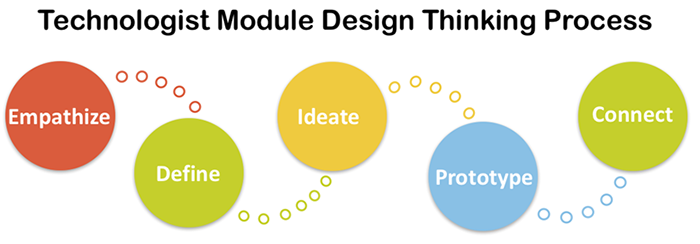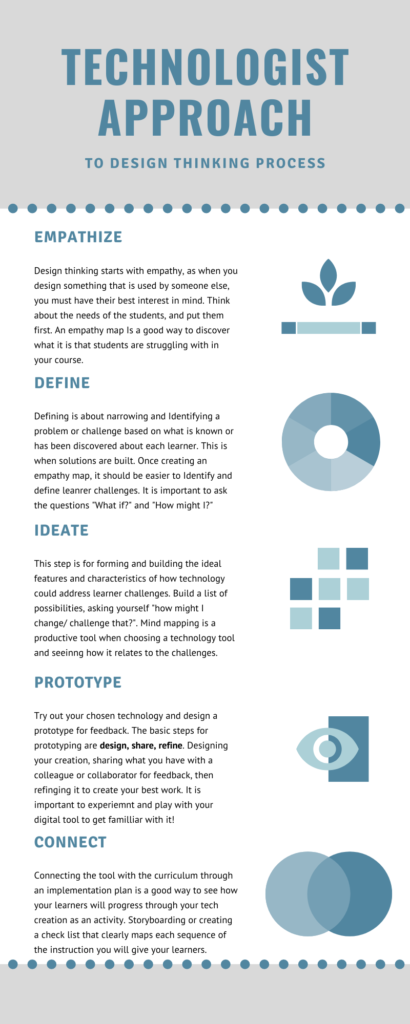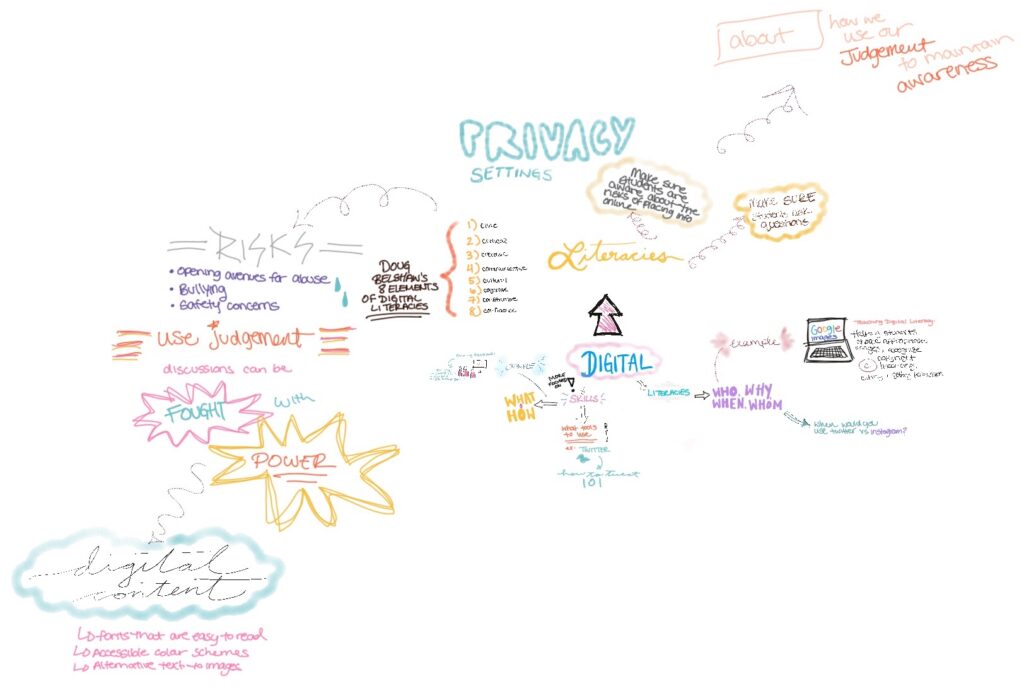For the second multi-media reflection, I chose to focus on the technologist approach to design thinking in digital literacies. The article (which can be found here https://extend.ecampusontario.ca/technologist-digital-literacies/) talks about the 5 steps of the design thinking process: Empathize, Define, Ideate, Prototype, and Connect. I chose to create an infographic that describes these steps, which can be found here.
The article at first sight seems to be quite simple. It has a quick over view of the article as a whole, and then branches out into separate pages that describe each method in little detail. What is very interesting, though, is that there are hyperlinks to other articles and lessons throughout. There is so much more information that meets the eye, which makes for quite the interactive experience. The main idea of the article, though, is about the design thinking process.

The design thinking process is five steps that ensures educators to be successful when designing their own digital tool to use in the classroom. Each step scaffolds from the one before, as it allows for change and revision from the work that has previously been done, but the ability to move on is limiting unless the task is complete. One of the most interesting and, in my opinion, important steps is empathize. This is the first step in the process, and the article calls for an activity called an empathy map. The empathy map is to help the educator get to know the challenges that students are facing right off the bat. This allows for the teacher to keep in mind what it is they do that isn’t working for the class, and to look for new and innovating alternatives. It is such an easy and inclusive way of getting to know your students, and it encourages to ask questions that cater to the student’s individual needs. No student should face consequences for having specific needs, and this way everyone is included in the creative process through catering to those needs.
Technology is a very inclusive tool. It allows for students of every walk of life to experience an abundance of knowledge, supportive tools, and so much more that couldn’t be accomplished analogically. Software such as talk-to-text, voice dictation, video modules, translation, etc cater to students with learning challenges in ground breaking ways. Allowing a deaf child to do presentations, a blind child to read homework chapters, or an international student to answer a question in class are just some of the ways that technology has allowed schools to be more inclusive to those who are not within the majority. By following the design thinking approach, it allows teachers to be held accountable to use their chosen technological tool to be inclusive to all within their classroom, no matter what challenges they do or don’t have to face on a daily basis. The technology acts as the even playing field, making the classroom a safe and inclusive environment for the unique set of minds that the teacher has in their hands.
I want to follow this approach when integrating technology into my classroom. There are so many different platforms that I haven’t even had the chance to explore yet, but through these 5 steps, I will be given the opportunity to challenge myself to do research into different programs and softwares that will improve my classroom environment. The collaborative approach is also something that I admire. Asking my colleagues for feedback opens so many doors to new ideas that I may have never thought of, which only benefits the students. This model is set up to be student focused, as the teacher is continuously asked to challenge themself to think how they can adjust or improve what they are working on to benefit the students. Being a teacher means putting aside your own personal feelings towards something if it means the student will benefit, which is something that is not easy but is extremely meaningful. Luckily, this model keeps both teacher and student engaged, which is something I find very intriguing and I look forward to implementing in my future practice.


